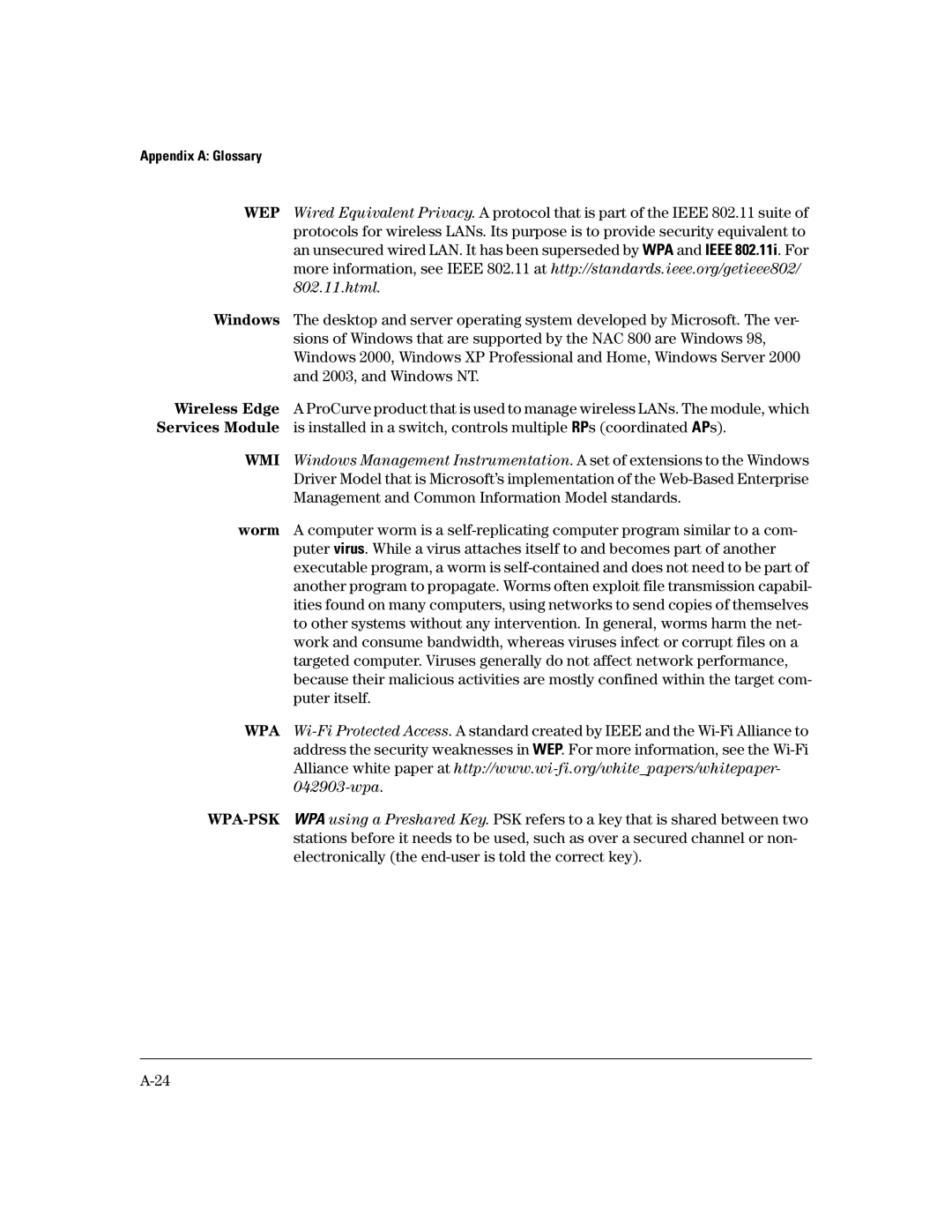Appendix A: Glossary
WEP Wired Equivalent Privacy. A protocol that is part of the IEEE 802.11 suite of protocols for wireless LANs. Its purpose is to provide security equivalent to an unsecured wired LAN. It has been superseded by WPA and IEEE 802.11i. For more information, see IEEE 802.11 at http://standards.ieee.org/getieee802/
802.11.html.
Windows The desktop and server operating system developed by Microsoft. The ver- sions of Windows that are supported by the NAC 800 are Windows 98, Windows 2000, Windows XP Professional and Home, Windows Server 2000 and 2003, and Windows NT.
Wireless Edge A ProCurve product that is used to manage wireless LANs. The module, which Services Module is installed in a switch, controls multiple RPs (coordinated APs).
WMI Windows Management Instrumentation. A set of extensions to the Windows Driver Model that is Microsoft’s implementation of the
worm A computer worm is a
WPA
